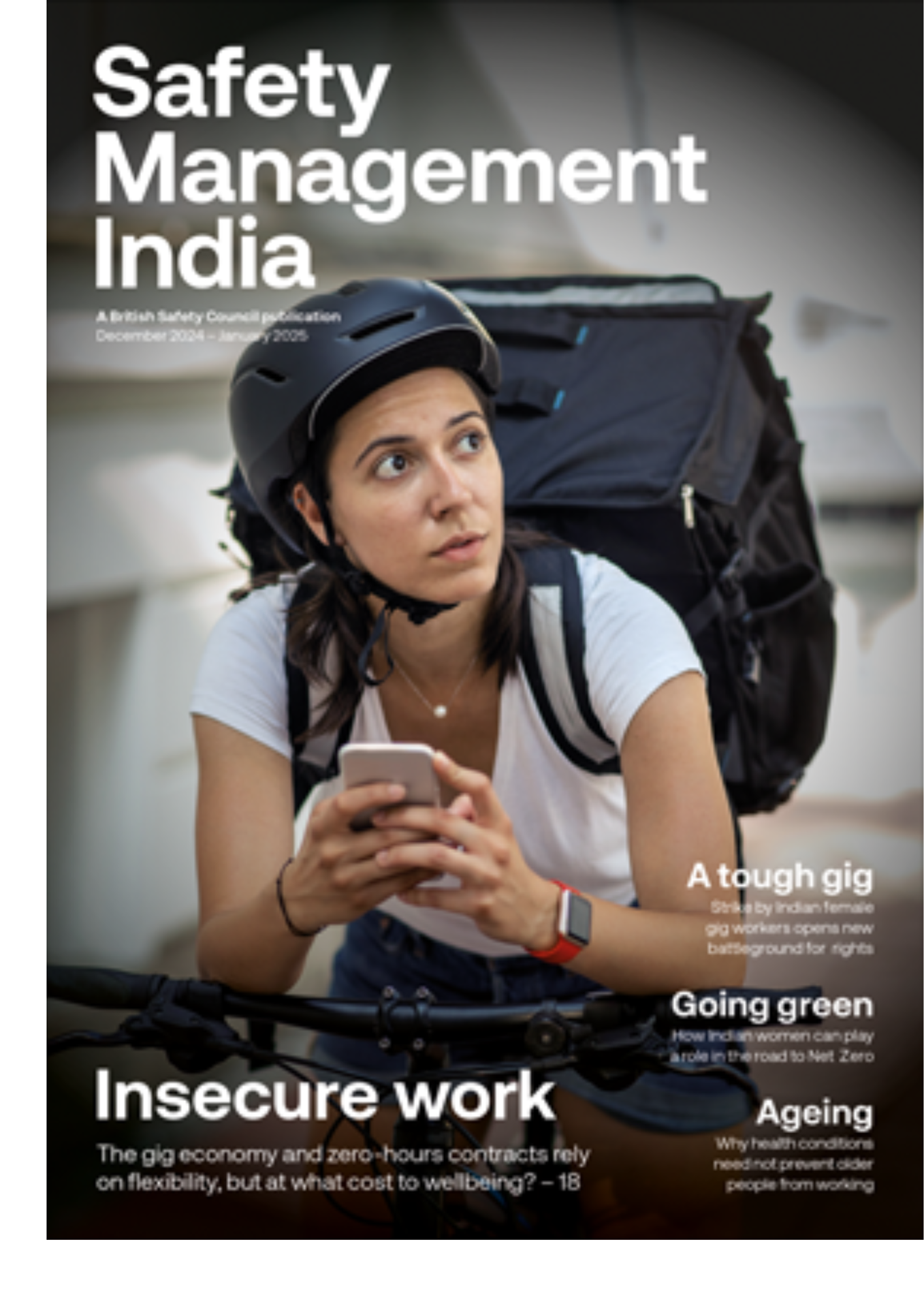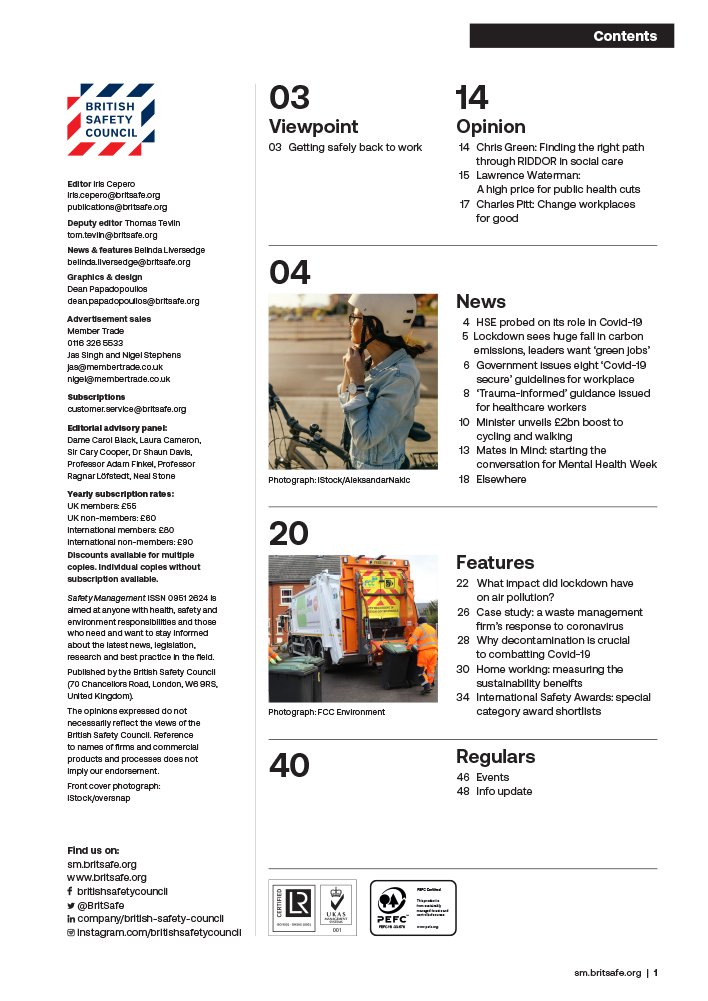Incidents of abuse and violence against workers who deal with the public are on the rise. What is causing this spike in inappropriate behaviour, and what can employers and the Government do to make the workplace safer for public-facing employees?
Features
The customer is not always (al)right: the alarming rise of abuse and violence against public-facing workers
Being spat at, having drinks poured on you and facing a barrage of verbal and physical abuse should not be part of anyone’s job, but workers in customer-facing roles are reporting an alarming increase in this type of behaviour from members of the public.
 Illustration: iStock/zaricm
Illustration: iStock/zaricm
Trade bodies and unions representing businesses and public-facing staff across a broad range of industries are calling for a joined-up approach to address the issue, through a combination of awareness-raising, increased incident reporting, more support from employers and action from the Government.
If the tide on these rising levels of abuse is not turned, they warn, it could result in customer-facing workers leaving their roles, with potentially damaging consequences for the UK’s predominantly services-based economy.
The Institute of Customer Service (ICS), an independent UK body focused on the customer service industry, conducts a survey every six months to monitor levels of abuse towards public-facing workers. The results of its most recent survey, published in September, found that about a third of UK customer service workers have experienced abuse in the workplace, and almost four in 10 of those employees are considering leaving their jobs as a result. The survey also found that more than a third of service workers who had faced abuse felt that customers were becoming more aggressive.
The ICS started tracking hostility towards public-facing staff in 2020 when it launched its ‘Service with Respect’ campaign, after participating in an All-Party Parliamentary Group meeting where the Union of Shop, Distributive and Allied Workers (USDAW) spoke about rising levels of abuse towards retail workers.
“We decided we would undertake a piece of wider research, across a number of industries and, sadly, we were seeing that there was a level of abuse, both physical and verbal, across a wide range of different industry sectors – from utilities to people in contact centres to the guys on the motorways,” ICS chief executive Jo Causon tells Safety Management. “I think there’s a genuine sense that it’s getting worse, not better.
 Institute of Customer Service chief executive Jo Causon: "I think there's a genuine sense that it's getting worse, not better." Photograph: Institute of Customer Service
Institute of Customer Service chief executive Jo Causon: "I think there's a genuine sense that it's getting worse, not better." Photograph: Institute of Customer Service
“Thirty-five per cent of the workers who have faced hostility think that aggression has become worse as well, and the impact of this is that nearly 40 per cent of the third of workers that are experiencing hostility have considered leaving their role because they’ve just had enough.”
The number of workers who have thought about quitting because of abuse has “significantly gone up” since the surveys began, adds Causon: “It’s now getting to the stage where people are thinking, ‘you know what, I just can’t cope with this’. And that’s quite critical given the fact that around 60 per cent of our workforce are in some form of customer-related role.”
Examples of the abuse reported by workers surveyed by the ICS include, “having a drink poured over them, customers deliberately coughing in their face, being spat at, having things thrown at them – we’ve even had examples of people threatening to bite people”, says Causon.
The Institute has been calling for three things to happen to address the issue. First, it wants public awareness to be raised about the impact this type of behaviour is having on workers. Secondly, it wants organisations to take the issue more seriously by adopting a zero-tolerance approach to abuse towards staff and reporting all incidents to the police. Finally, it is campaigning for legislation to make abusive behaviour towards public-facing staff in all industries a standalone offence – a wish that was partially fulfilled in mid-2022 with the introduction of the Abuse of Public-facing Workers (Offences) Bill.
“Back in July 2022 we had some success when we saw a change in the law that gave protection to people in public-facing roles by deeming [abuse] to be an aggravating offence that could carry a custodial sentence,” says Causon.
The UK Government announced in April 2024 that assaulting a shop worker would become a standalone criminal offence in England and Wales (a similar law already exists in Scotland), as part of a plan to crack down on retail crime, which has been soaring in recent months. The British Retail Consortium said on 30 January that incidents of violence and abuse against shop workers had increased by 50 per cent to 2,000 a day in the year to September 2024, compared with the previous year.
According to a survey carried out in 2023 by USDAW, seven in 10 retail workers had suffered abuse from customers, nearly half had been threatened and 18 per cent had been assaulted. Theft from shops and armed robbery were triggers for 60 per cent of these incidents.
Interim results from USDAW’s most recent survey indicate that there was little improvement in 2024. Sixty-nine per cent of the 4,000 retail staff surveyed said they had experienced verbal abuse, 45 per cent had been threatened by a customer and 17 per cent had been assaulted. The survey found that 70 per cent of these incidents had been triggered by shoplifting and two-thirds of those were linked to addiction.
 USDAW survey found that 70 per cent of incidents of abuse and violence against retail workers is triggered by shoplifting. Photograph: iStock/AndreyPopov
USDAW survey found that 70 per cent of incidents of abuse and violence against retail workers is triggered by shoplifting. Photograph: iStock/AndreyPopov
These results tally with the experiences of Andrew Dent, a former supermarket worker from Teesside who spoke to Safety Management about some of the abuse that he and his colleagues had faced from customers. Abuse and violence towards retail workers has “progressively got worse year-on-year”, in his view.
“Twenty years ago, when I was at Safeway, it was kind of unheard of. People still stole stuff, but it was never that bad,” he says. “I took a bit of a break and then went back about 10 years ago and it started off not too bad – it was just bits of shoplifting, not abuse.
“But then a lot more was getting stolen, and you realised that people were coming in and stealing to order – then it started getting more abusive. People telling you they’re going to stab you, people telling you they’re going to smash your face in. I had a colleague who was threatened with a knife.” The abuse was “daily” and was one of the reasons he and some of his colleagues left the retail sector.
“People get anxious knowing what it’s going to be like,” says Dent.
Tony Whelan, a health and safety officer at USDAW, says that making it a standalone criminal offence to assault a retail worker would help in the long run, as would plans unveiled by the Government late last year to remove the £200 threshold that currently makes shop theft of items valued at below that amount a lesser offence. But neither of these moves helps in the here and now.
“That’s all going to take time. The shop workers are dealing with these issues right now and there’s not going to be a quick fix because the legal system itself is significantly in backlog,” says Whelan. In the meantime, through its Freedom from Fear campaign USDAW has been running an annual Respect for Shopworkers Week in November, to raise awareness of the issue.
 Photograph: USDAW
Photograph: USDAW
“We’ve been running campaign stalls in workplaces across the country, to explain to the public to keep their cool in the run-up to Christmas but also to explain to staff the importance of reporting incidents, because they almost view [abuse] as part of the job and they just get on with it,” says Whelan. “We recently did a webinar to explain to our reps the importance of getting members and the workforce to start reporting incidents.”
He points to retailers including Tesco, Co-Op and Sainsbury’s, which he says have all improved their reporting systems and made it easier for staff to report incidents of abuse through, for example, electronic apps. However, there is still “significant under-reporting” in Whelan’s view.
What’s behind the rising abuse, and what’s the answer?
The cost-of-living crisis and the high-pressure society we live in are factors behind increased levels of abuse towards customer-facing staff, believes Causon from the Institute of Customer Service, but this does not excuse the behaviour that is being reported.
“As customers and consumers, we’re under a lot more pressure than we used to be. If you think about the cost of living and our instant-gratification society, we are certainly feeling the strain, particularly frustration where technology has not been deployed well, but none of that excuses inappropriate behaviour,” she says. “There’s a big difference between getting a bit grumpy and irritated by being made to wait too long in a queue and what we’re talking about here.”
In addition to making it easier for staff to report incidents of abuse, Causon would like to see businesses empowering their workers and ensuring that they can safely “remove themselves” from abusive situations.
“A number of people in our campaign have introduced several different coping mechanisms, for example giving the customer a number of warnings, so if they are consistently inappropriate the agent can end the call – empowering your staff to have some control over this is one part of it,” she says. Causon would also like the standalone offence legislation that has been promised for retail workers to extend to all customer-facing industries: “If every business in the land is reporting this then you’ve got to raise it not just as individual industry sectors. If you call on Government with this number [of sectors] reporting [abuse] then, quite frankly, you can’t ignore it, can you?”
The increase in abuse and violence against public-facing workers is a “societal issue” with no quick fix, in Whelan’s view. While the use of body-worn cameras and the deployment of additional security guards can help by acting as a deterrent, they are sticking-plaster fixes and there is “no silver bullet”. Similarly, “we’re never going to be able to arrest our way out of this problem”, he adds, especially as the root cause of many incidents of abuse appears to be addiction.
“If two-thirds of shoplifters are addicted to something, then we need to rehabilitate them to get them out of that cycle,” says Whelan. “In terms of the employer, what’s needed is more support. It’s not a good picture but we have to keep pushing, and it’s going to take time.”



